How to Be Invisible Online (Without Quitting the Internet)
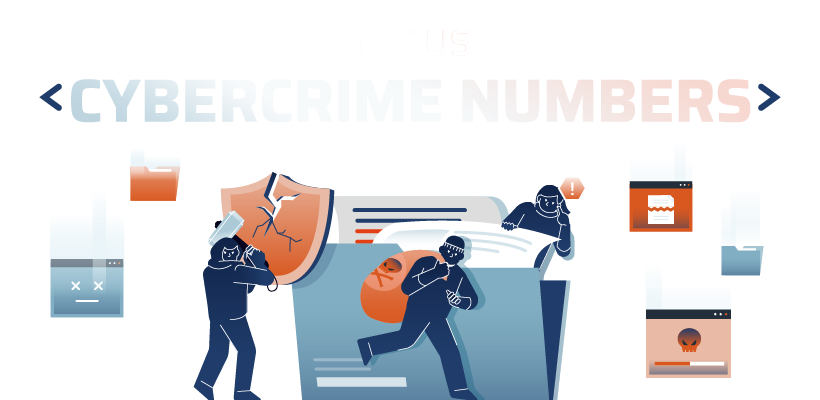
U.S. Cybercrime Numbers
Cybercrime is any criminal activity that targets or uses a computer, computer network or connected device. Most cybercrime is perpetrated by cybercriminals or hackers looking to make money.
While cybercrime is often underreported, it is rising in both frequency and severity to a shocking degree. In 2021 alone, the FBI received a record 847,376 complaints of cybercrime, with potential losses exceeding $6.9 billion. As the world becomes more dependent on the internet, we become more vulnerable to cybercrime.
The U.S. is one of the countries with some of the most robust cyber laws in place. The first effective law against such crimes was first established in the U.S in 1986, termed The Computer Fraud and Abuse Act (CFAA).
But what do figures look like at state level? To find out which states suffer the most from cybercrime, Surfshark reviewed FBI data to develop this study.
What We Did
To assess how cybercrime varies in each state, Surfshark reviewed data from the FBI’s Internet Crime Complaint Center (IC3). We collected the number of victims of cybercrime, their total losses, the number of perpetrators and the amount perpetrators had stolen in each state. We then calculated each state's average losses per victim and the amount stolen per perpetrator.
Key Findings
- Nevada has the most cybercrime victims of any state, with 801 per 100,000 internet users — more than four times the national average.
- The average cybercrime victim in North Dakota loses $31,711 per scam — the largest average loss of any state.
- While Americans aged 40 to 49 constitute just 12.4% of the U.S. population, they accounted for 20.8% of all cybercrime victims in 2021.
- The average cybercriminal steals $14,048 per scam in the United States.
Nevada Has the Most Cybercrime Victims Per Capita
The rate of cybercrime varies heavily from state to state. In Nevada, for example, there were 801 cybercrime victims per 100,000 internet users in 2021 — the most in any state and nearly eight times the victimization rate in Mississippi, where there were 101 cybercrime victims per 100,000 internet users. To put this into perspective, the population of Nevada is 3,185,426.
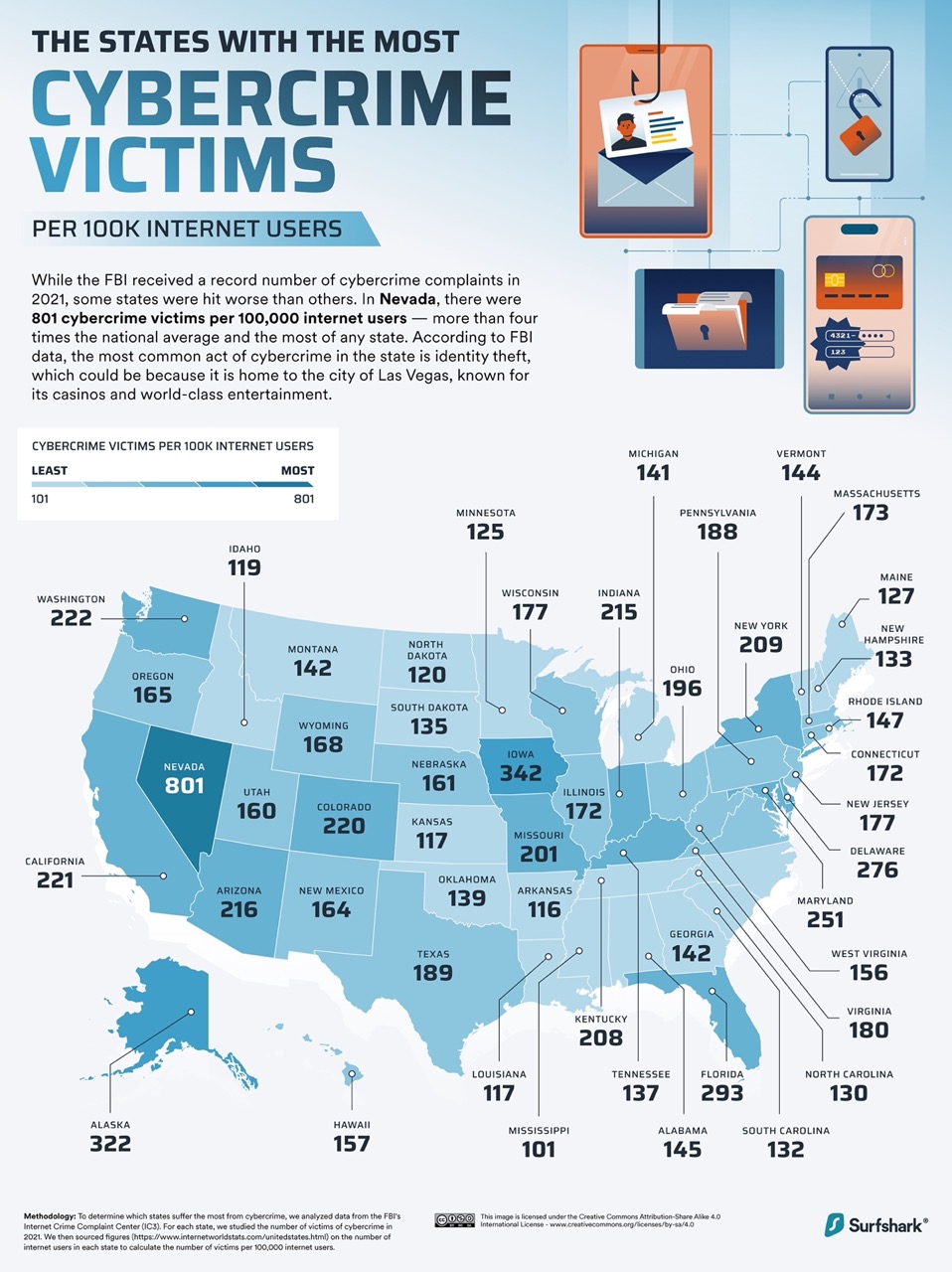 Click here to see this image in full size
Click here to see this image in full sizeWhile nationwide the most common type of cybercrime is the phishing scam — accounting for 42% of all cybercrime victims in 2021, the types of crimes vary by state.
In Nevada, for example, the most common type of cybercrime is identity theft. In 2021, there were 9,054 reported victims of identity theft, accounting for 49% of all cybercrime victims in the state. The remaining victims experienced credit card fraud and cyberterrorism.
Other prevalent cybercrimes around the country include non-payment or non-delivery — wherein a seller sends goods or services and never receives payment, or vice versa — and personal data breach, where personal data is released from a secure location to an untrusted environment.
Cybercrime Victims in North Dakota Lose $31,711 on Average
While cybercrime is more common in Nevada than in any other state, victims here lose less money than those living in other parts of the country. The average cybercrime victim in Nevada loses $4,728 per scam, the third smallest amount in any state behind West Virginia ($4,428) and Iowa ($3,820).
Meanwhile, the average victim in North Dakota loses $31,711 per cybercrime — by far the most in any state.
Interestingly, North Dakota classifies computer crime and computer fraud as separate crimes, and as such, the penalty varies depending on the type of crime. A computer crime is where someone gains unauthorized access to a computer or network in order to alter, cause damage to, introduce a virus to or otherwise affect that computer or network. In contrast, computer fraud is the use of a computer or network to deceive and defraud another person or business.
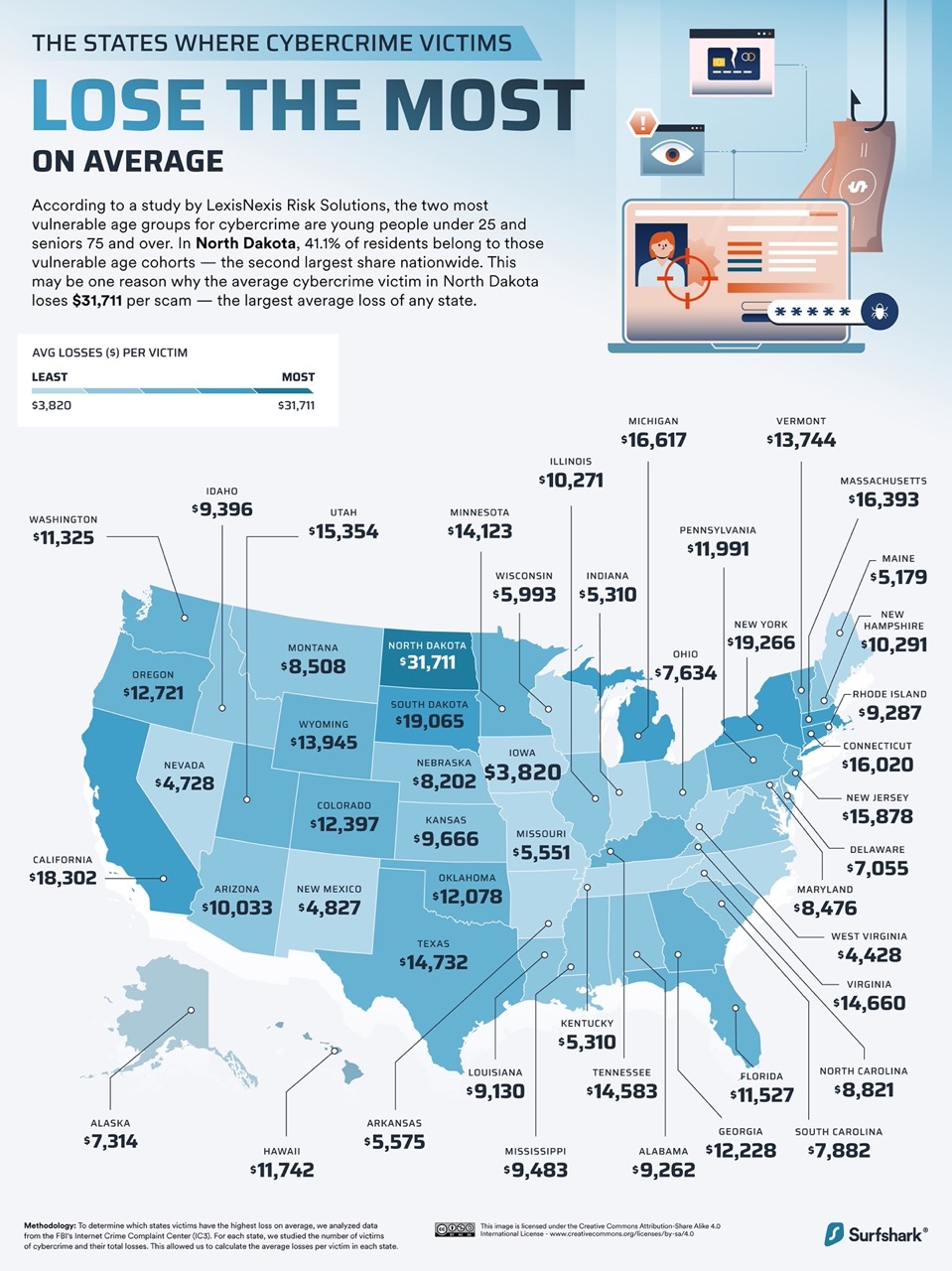 Click here to see this image in full size
Click here to see this image in full sizeThe two most profitable cybercrimes are compromising email scams — wherein a hacker can instigate an unauthorized transfer of funds from an individual’s bank account through email — and fake investment scams.
In North Dakota, fake relationship schemes are the largest moneymaker for cybercriminals. In 2021, hackers pretending to be family, friends or romantic relationships online could scheme up to $12.1 million out of internet users in North Dakota, accounting for 50% of all money lost to cybercrime in the state.
Cybercrime Is Often Committed Locally
While many cybercrimes are committed by those living outside of the United States, the FBI has been able to identify a significant number of cybercriminals within U.S. borders. In most cases, the FBI can identify the specific state a cybercriminal is located in, allowing us to see which states have the most perpetrators of cybercrime per capita.
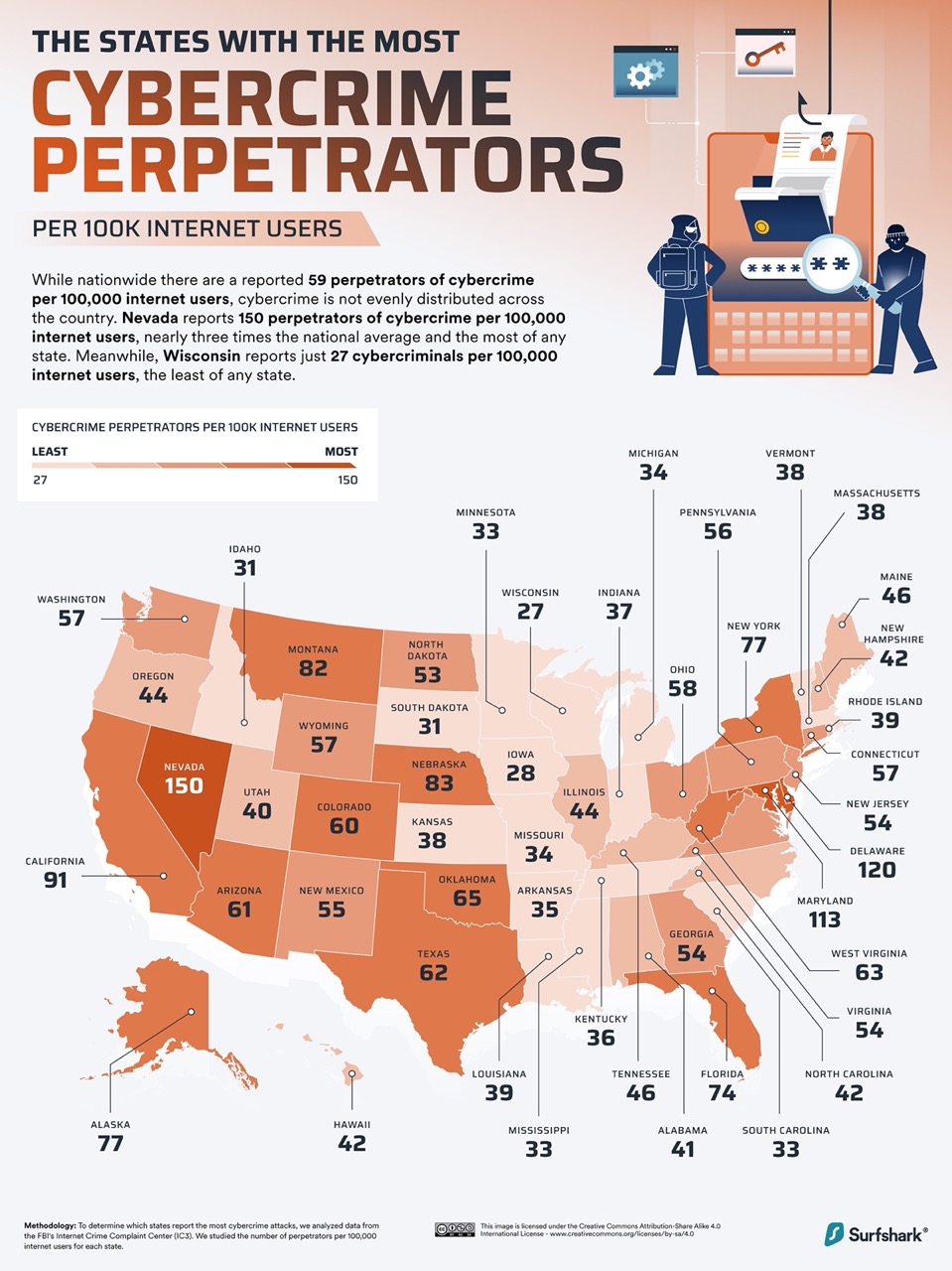 Click here to see this image in full size
Click here to see this image in full sizeIn Nevada, there are 150 perpetrators of cybercrime per 100,000 internet users, by far the most in any state and more than five times the cybercriminal rate in Wisconsin, where there are 27 perpetrators per 100,000 internet users. Delaware (120) and Maryland (113) are the only other states with more than 100 perpetrators of cybercrime per 100,000 internet users.
California and New York also appear in the top 10, with 91 and 77 perpetrators of cybercrime per 100,000 internet users, respectively.
Cybercrime Is the New Colorado Gold Rush
The severity of cybercrime varies significantly from state to state. In Colorado, for example, the average perpetrator of cybercrime netted a whopping $33,605 in 2021, the most in any state. That’s more than 12 times the average spoils in West Virginia, where cybercriminals netted an average of $2,630 each. To put this into perspective, the average salary in Colorado is $63,235.
In the states where perpetrators steal the most, cybercriminals are likely targeting small- to mid-size businesses with financial capital. In the financial mecca of New York, for example, cybercrime perpetrators made off with $29,919 on average, the third most in any state.
The most profitable cybercrimes in New York were investment scams, which accounted for 34% of all money lost due to cybercrime in 2021. By comparison, investment scams only accounted for 19% of all money swindled through cybercrime in 2021 nationwide.
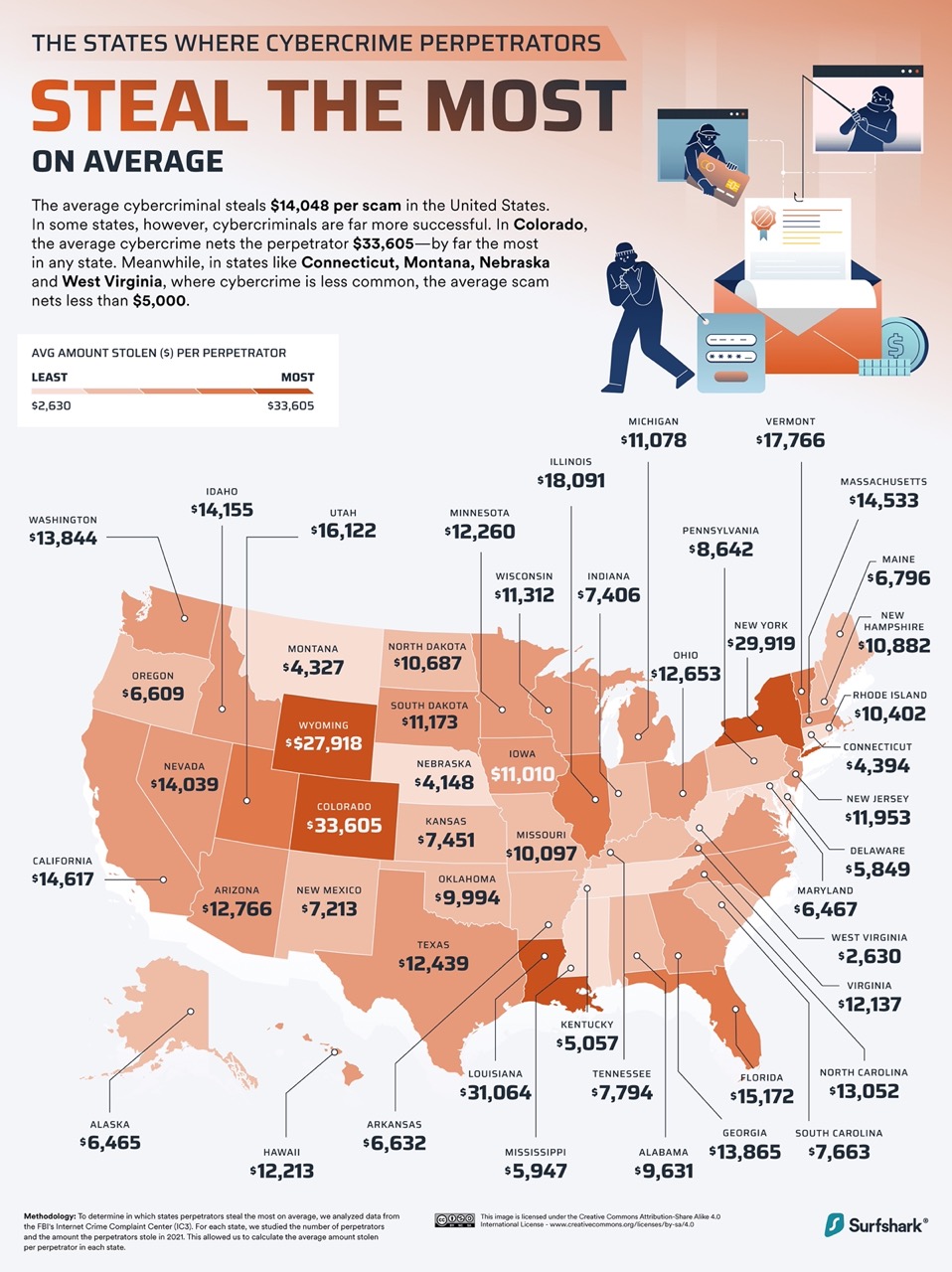 Click here to see this image in full size
Click here to see this image in full sizeInterestingly, the severity of cybercrime correlates with overall property crime. In Louisiana, for example, the average cybercriminal made off with an average of $31,064 each in 2021, the second most in any state.
According to the FBI, there were also 2,884 property crimes — burglary, larceny-theft, motor vehicle theft and arson — per 100,000 Louisiana residents in 2020, the most in any state. Similarly, in Colorado — where cybercrime yields the most illegal income per perpetrator — there were 2,834 property crimes per 100,000 residents, the third highest property crime rate.
Seniors Are the Most Targeted Age Group for Cybercrime
In most instances of cybercrime, the FBI is able to identify the age of the victim. In 2021, the age group most victimized by cybercrime was the 60-plus cohort. In 2021, 92,371 Americans 60 years and older were victims of cybercrime, collectively losing $1.7 billion.
But while Americans 60 years and older lost the most to cybercrime in 2021, some age cohorts were disproportionately victimized. The 40- to49-year-old age cohort, for example, constitutes just 12.4% of the U.S. population. Despite the relatively small size of their cohort, 89,184 Americans aged 40 to 49 were victims of cybercrime in 2021 — constituting 20.8% of all victims in the United States. Conversely, while Americans under 20 constitute 24.8% of the population, they accounted for just 3.5% of cybercrime victims in 2021.
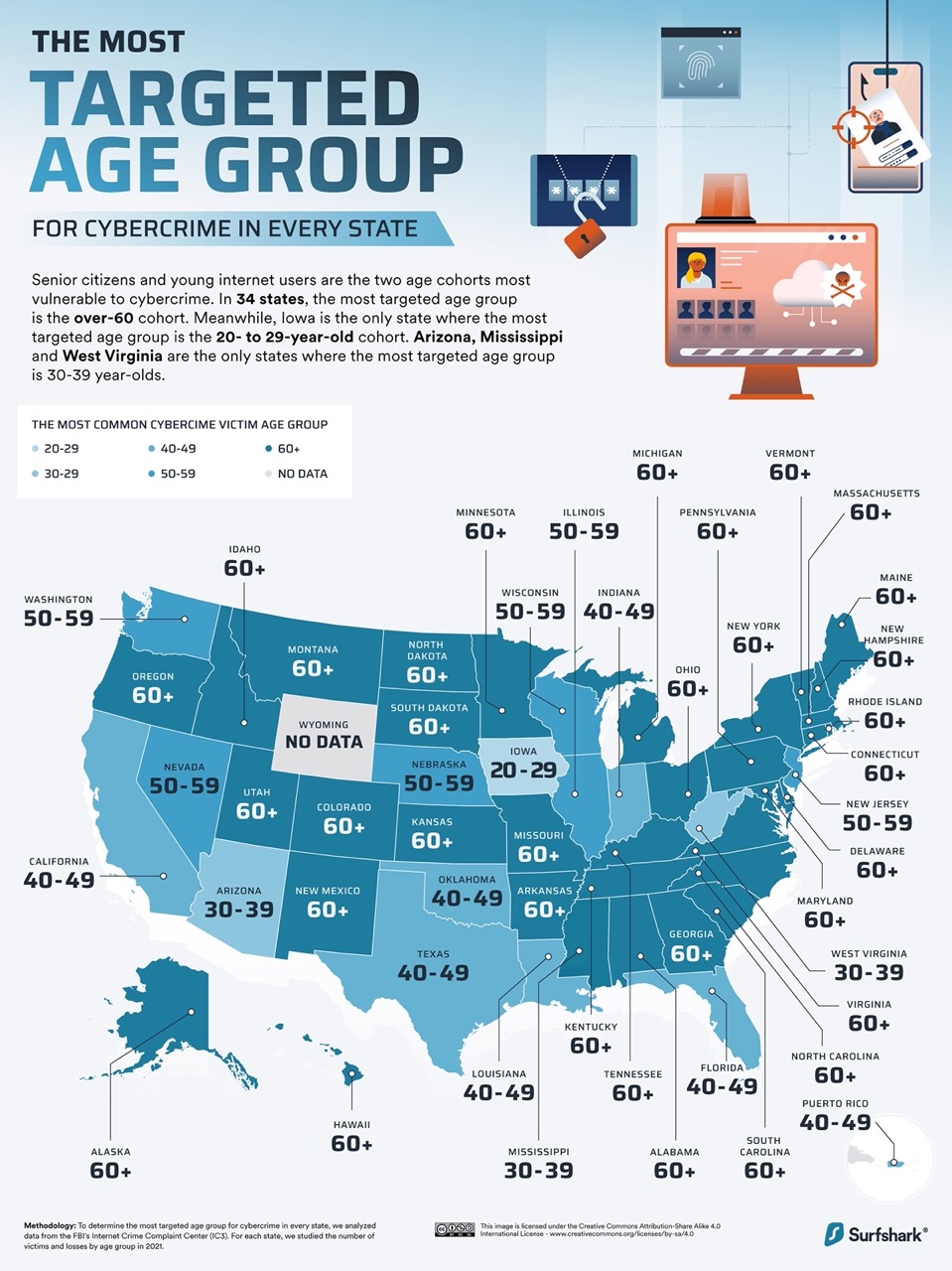 Click here to see this image in full size
Click here to see this image in full sizeIn a majority of states, the pattern is the same — the majority of victims are 60 years and older. This is likely because senior citizens are assumed to be less aware of internet safety and online dangers.
In 16 states, however, the most commonly targeted age group is 59 years or younger. In Iowa, the most victimized age group is the 20- to 29-year-old age cohort — the youngest targeted group in any state.
The State of Cybercrime
Cybercrime varies heavily throughout the United States and depends on a number of factors. Laws, penalties and protections against cybercrime vary by city and state. The potential victim pool also varies across the country.
In states with older populations, the average internet user may be less tech-savvy and more vulnerable to phishing scams or other types of cybercrime. Similarly, states with more businesses prone to cybercrime — like real estate, gambling, lottery and sweepstakes — may have more cybercrime overall.
Explore the table below to see how the frequency and severity of cybercrime vary throughout the United States.
More Connectivity Means More Vulnerability to Cybercrime
According to data from the International Telecommunication Union, the percentage of the world population using the internet has more than doubled in the past decade. As the population becomes more dependent on the internet, they also become more vulnerable to threats from cybercriminals.
Methodology
We reviewed data from the FBI’s Internet Crime Complaint Center (IC3) to see how cybercrime varies across the United States. We collected the number of victims of cybercrime, their total losses, the number of perpetrators and the amount perpetrators had stolen in each state.
We then calculated each state's average losses per victim and the amount stolen per perpetrator. We adjusted the figures for the population using the number of internet users in each state. We also analyzed age group data to determine the age cohort with the highest victim count in each state.
The figures collected were from 2021.